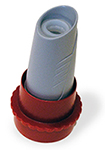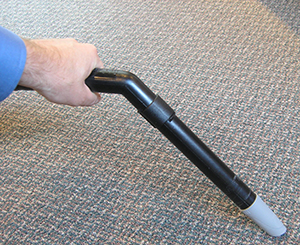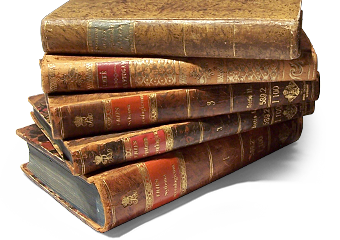Dust sample, quantitative fungal culture [FC-D]
Published: July 8th, 2009
Revised: March 24th, 2023
The analysis of vacuum collected dust is widely used to estimate microbiological exposures in human population health studies. In this context, dust analysis has repeatedly proven to be a useful proxy of exposure, because it serves as a reservoir for particles to which people are exposed in indoor environments. Dust itself also serves as a long-term integrative air sample, capturing transient airborne spore bursts, and retaining representative particles amid the growing bulk of textile fibres, hairs and skin scales that comprise the predominant mass-fraction of house dust.
Dust analysis is a useful adjunct to the investigation of indoor environments for fungal amplification sources. Although the total levels of culturable fungi in dust are not necessarily reflective of the condition of a building, careful evaluation of the species composition of the fungal cohort of dust can often lead a skilled investigator to meaningful revelations that otherwise would be missed. Although there are no guideline documents on the interpretation of dust sampling data, excellent baseline information for the expected fungal population of dust fungi is given in Dr. Scott’s PhD thesis, Studies on indoor fungi (2001).
 Dust is usually obtained by vacuum collection from a predetermine area of flooring. Vacuum dust collectors range from very sophisticated devices, such as those used in research studies, to relatively simple “interceptor” filters that can be affixed to the sucking end of a household vacuum cleaner. The Dustream collector, pictured at right, is low-cost, widely accepted method for vacuum dust collection that does not require specialized equipment. The red adapter at the base allows to be attached to hoses of a range of sizes. This collection method can use used for culture-based tests, as well as endotoxin, glucan, and allergen assays such as mould and dust mite. Note that samples obtained from household vacuum cleaner bags are almost useless for biological analyses, since the typically growth-promotive environment within the collection bag, over time and depending upon the amount of moisture present and the frequency of cleaning and maintenance, causes changes in the composition and abundance of the captured fungal population.
Dust is usually obtained by vacuum collection from a predetermine area of flooring. Vacuum dust collectors range from very sophisticated devices, such as those used in research studies, to relatively simple “interceptor” filters that can be affixed to the sucking end of a household vacuum cleaner. The Dustream collector, pictured at right, is low-cost, widely accepted method for vacuum dust collection that does not require specialized equipment. The red adapter at the base allows to be attached to hoses of a range of sizes. This collection method can use used for culture-based tests, as well as endotoxin, glucan, and allergen assays such as mould and dust mite. Note that samples obtained from household vacuum cleaner bags are almost useless for biological analyses, since the typically growth-promotive environment within the collection bag, over time and depending upon the amount of moisture present and the frequency of cleaning and maintenance, causes changes in the composition and abundance of the captured fungal population.
Field collection method
- Don a pair of clean, disposable nitrile gloves. Use painter’s tape to outline a 1 m² area of flooring. If a contiguous space cannot be located to accommodate the full area, define as many sub-areas as necessary to demarcate a total floor area of 1 m².
 Remove the Dustream nylon mesh collection thimble from its polypropylene storage bag, and place the filter thimble into the collector shell. Affix the collector shell to the extension wand of the vacuum cleaner, using the red adapter ring, if necessary.
Remove the Dustream nylon mesh collection thimble from its polypropylene storage bag, and place the filter thimble into the collector shell. Affix the collector shell to the extension wand of the vacuum cleaner, using the red adapter ring, if necessary.- Switch the vacuum cleaner on, and proceed to vacuum the entire surface within the demarcated area. To ensure thorough coverage, make 7 repeated passes over each stroke prior to proceeding to the adjacent stroke. Covering the entire area in this manner should take approximately 10 min. In the event that a sufficiently large amount of dust is present that the vacuum stalls or overheats due to back-pressure, record the actual area vacuumed to the nearest stroke in which 7 passes were completed.
- Remove the nylon mesh collection thimble from the collector shell, and place the thimble into a clean vial or polypropylene bag. Be sure to label the container with the sample number, job number, date and time of collection, and the surface area obtained. Use an indelible marker to ensure that the label data is not easily wiped off of the container. Wipe any residual fine dust from the collector shell using a 70% isopropyl alcohol wipe prior to beginning another sample collection.
Laboratory code: FC-D
Service options

Results reporting
The results of this test will be reported quantitatively, as Colony Forming Units per gram of dust (CFU/g), and broken down by species, species-group, or genus, depending on the taxon observed. For clients desiring to know the mass of total and/ or fine (< 105 um) dust recovered, we would be happy to supply these data for a small additional fee.



